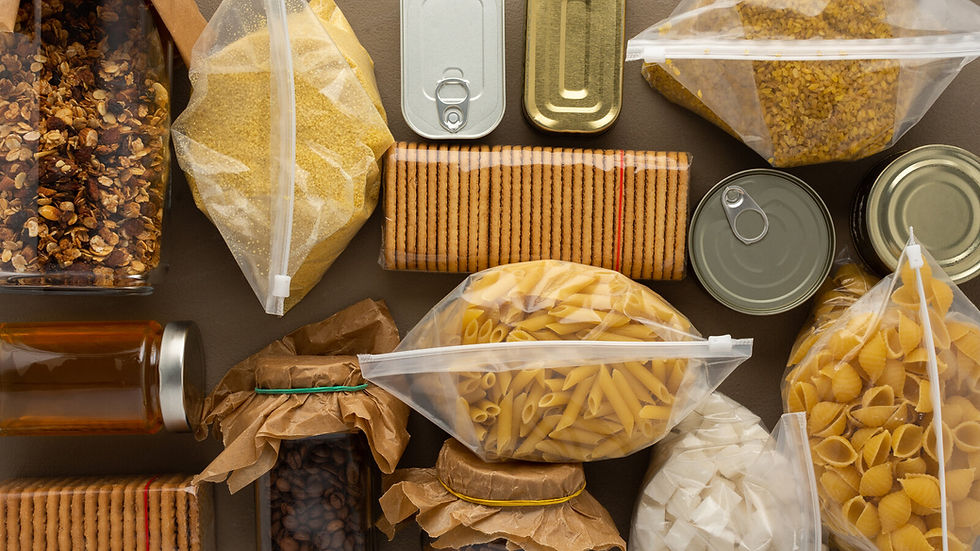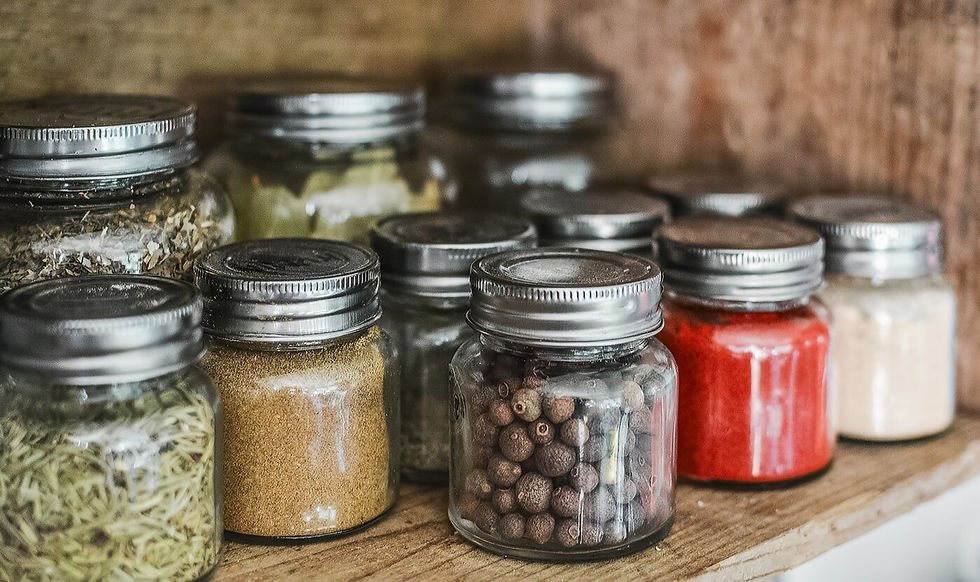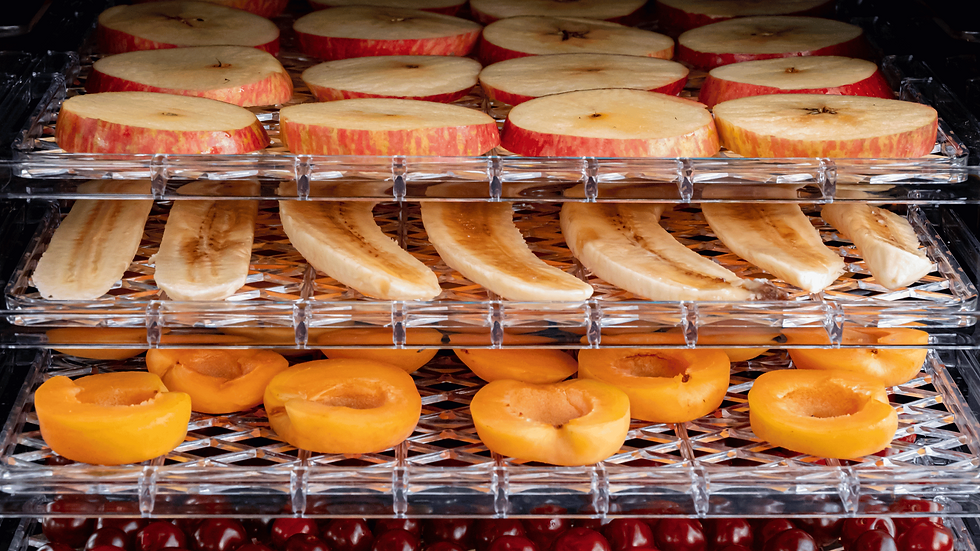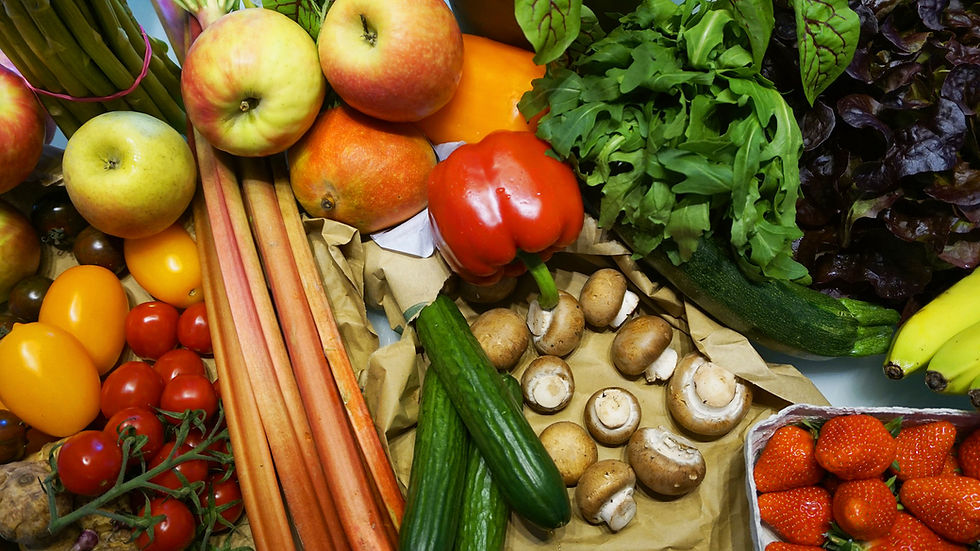The Best Place To Store Emergency Food
- Walid
- Aug 2
- 9 min read
Emergency Food Storage Essentials
When it comes to emergency food storage, having a solid understanding of the basics can make all the difference. Emergency food supplies are crucial during unexpected situations like natural disasters, power outages, or economic instability. By ensuring that you have a reliable stock of food stored, you can be better prepared to face challenges without immediate access to grocery stores.

Choosing the Right Foods
Selecting the right foods for your emergency food storage is essential. Focus on non-perishable items that provide necessary nutrients. Canned goods, dried fruits, grains, and protein sources such as beans are excellent choices. Store food that your family typically eats to ensure that everyone is willing to consume it during an emergency.
Want to explore more? Head over to our homepage and see what we have to offer!
Storage Conditions
Proper storage conditions are vital for maintaining the quality of your emergency food supplies. Keep food in a cool, dry place, away from direct sunlight. Also, ensure that food containers are sealed tightly to prevent spoilage and pest infiltration. Regularly check expiration dates to rotate your stock effectively.
Canned vegetables
Dried pasta and rice
Peanut butter
Granola bars
Creating a plan for emergency food storage involves not only gathering supplies but also keeping track of them. A checklist can help streamline this process.
Food Item | Shelf Life |
Canned Beans | 2-5 years |
Instant Rice | 1-2 years |
Peanut Butter | 6-12 months |
Emergency Food Storage Tips
To maximize your emergency food storage, keep the following tips in mind:
Label products with expiration dates.
Store enough food for 72 hours at a minimum.
Include a manual can opener in your supplies.
"A well-planned emergency food storage can be your lifeline during challenging times. Always be prepared."
This is just one of many great blogs we have—explore more right here.
Place To Store Emergency Food
Establishing a reliable emergency food storage system is crucial for any household. In the event of unforeseen circumstances such as natural disasters or pandemics, having non-perishable food items can be a lifesaver. Your emergency food storage should include a variety of foods that ensure both nutrition and enjoyment. An effective strategy goes beyond just stashing away canned goods; it incorporates items that are easy to prepare, flavorful, and energy-rich.
Check out our selection of dehydrated red bell peppers that are great in stews, soups, or as a quick meal accompaniment.
Staple Foods
Including staple foods in your emergency food storage is essential for maintaining energy levels. These items include dried grains like rice, pasta, and quinoa, as well as legumes such as lentils and beans. They provide a long shelf life and are versatile enough to incorporate into various recipes. Stocking these essentials means you’ll always have something to rely on when standard meals aren’t an option.
Canned and Packaged Goods
Canned foods and packaged goods are convenient for any emergency food storage plan. They require no refrigeration and can last for years. Think of canned vegetables, fruits, meat, and fish, along with packaged soups and stews. These items help create balanced meals while offering beloved flavors during uncertain times.
Rice and Pasta
Canned Vegetables and Fruits
Dried Beans and Lentils
Nut Butters
Food Item | Shelf Life |
Rice | Indefinite if stored properly |
Canned Vegetables | 2-5 years |
Dried Beans | Indefinite if stored properly |
Hydration Items
Staying hydrated is just as crucial as having food in your emergency food storage. Having access to clean drinking water is paramount. Consider investing in water purification tablets, a water filtration system, or even storing bottled water for emergencies.
Water Filtration System
Bottled Water
Water Purification Tablets
"Proper preparation through emergency food storage can make a world of difference in a crisis."
How to Create a Sustainable Food Stockpile
Creating a sustainable food stockpile is essential for ensuring your family's nutrition and safety during emergencies. With careful planning and thoughtful choices, you can build an emergency food storage system that lasts. Start by evaluating your family’s dietary needs and preferences. Focus on foods that provide essential nutrients and can remain edible for extended periods. Proper storage conditions are vital to maintaining food quality over time.

Choose Nutrient-Dense Foods
Opt for a mix of non-perishable items that are high in protein, fiber, and healthy fats. Consider canned goods, dried fruits, nuts, and whole grains as they can contribute significantly to your daily nutrition. Keep in mind the importance of variety to prevent palate fatigue and ensure a balanced diet even during shortages.
Packaging and Storage Tips
Invest in airtight containers to protect your emergency food storage from moisture and pests. Label each container with contents and expiration dates for easy access. A cool, dark place is ideal for storing your food stockpile, as it helps maintain quality and prolongs shelf life.
Evaluate and Rotate Stock
Taking the time to regularly check your food supply ensures nothing goes unused. Rotate your stockpile by using older items first and replacing them with new purchases. This practice not only maintains a fresh supply but also helps you stay prepared for any emergency.
“Preparedness is key. The best way to face an emergency is to be ready.”
Want to make your cooking healthier? Try our dehydrated cabbage for quick cooking and retaining nutrients.
Top Storage Solutions for Emergency Provisions
Efficient Emergency Food Storage is essential for ensuring you and your family are prepared for any unforeseen circumstances. Whether natural disasters, power outages, or pandemics, having a solid plan for food provisions can make all the difference. Selecting the right storage solutions can help maintain food quality and ensure accessibility during an emergency.
Choose the Right Containers
When it comes to storing emergency food, the choice of containers is crucial. Opt for food-grade plastic bins or glass jars that are airtight. This prevents moisture and pests from spoiling your supplies. Additionally, consider labeling each container with contents and expiration dates for easy identification. Your Emergency Food Storage will be more organized, saving you valuable time during any crisis.
Optimize Temperature and Humidity Control
Temperature and humidity can affect food longevity. Ideally, keep your emergency food in a cool, dry place. Excessive heat or humidity can quickly ruin even the best-prepared stocks. Investing in a thermometer and a humidity gauge can help you monitor conditions for optimal food preservation.
Airtight glass jars
Food-grade plastic bins
Vacuum-sealed bags
Mylar bags with oxygen absorbers
Metal containers
Always consider rotating your supplies regularly to ensure freshness and avoid wasting food.
Food Type | Storage Duration |
Canned Goods | 2-5 years |
Dried Beans | 10+ years |
Rice | 30 years |
Pasta | 8-10 years |
Rotate Your Provisions
To maximize the effectiveness of your Emergency Food Storage, implementing a rotation system is key. Regularly check expiration dates and consume items nearing the end of their shelf life while replenishing your stocks. This will help ensure you always have viable supplies on hand.
Check dates every six months
Use older items first
Keep track of inventory
Organize by category
"Being prepared is not just about having supplies but also knowing how to store them effectively!"
Emergency Food Storage for Special Dietary Needs
When it comes to emergency food storage, individuals with special dietary needs often face unique challenges. It’s essential to plan ahead to ensure that dietary restrictions do not compromise health during an emergency. A well-thought-out strategy can make a significant difference in stressful situations, especially for those who have allergies, medical conditions, or lifestyle choices that dictate their diets.

Assessing Your Needs
The first step in effective emergency food storage is assessing your specific dietary requirements. Consider common restrictions like gluten-free, vegetarian, vegan, or low-sodium options. By identifying your needs, you can create a tailored emergency food supply that meets your dietary restrictions while still providing the necessary nutrition. This assessment is crucial to avoid situations where available foods may be unsuitable.
Choosing the Right Foods
Once you know your dietary needs, selecting the right foods becomes paramount. Focus on items that have a long shelf life, are nutrient-dense, and are easy to prepare. Look for non-perishable items such as canned vegetables, beans, and grains, ensuring they cater to your diet. Here’s a quick list of suitable options to include in your emergency food storage:
Canned fruits in natural juices
Dried beans and lentils
Gluten-free pasta
Nuts and seeds
Vegetable broths
Food Item | Shelf Life | Dietary Type |
Canned Vegetables | 2-5 years | Vegan, Gluten-free |
Brown Rice | 6 months to 1 year | Vegan, Gluten-free |
Peanut Butter | 1-2 years | Vegan, Gluten-free |
Stocking Up Safely
When stocking your emergency food storage, remember to regularly rotate your supplies to maintain freshness. Use a first-in, first-out (FIFO) system, consuming older items first while adding new products to the back. This practice not only ensures your food remains usable but also minimizes waste during emergencies.
If you are looking for low energy consumption and high shelf life ingredients, dehydrated vegetable products are not to be missed.
Keep an inventory of your food
Check expiration dates regularly
Store in a cool, dark place
"When life gets unpredictable, having your emergency food storage aligned with your dietary needs can be a lifesaver."
Preparing for Natural Disasters with Food Reserves
Natural disasters can strike unexpectedly, making it crucial to be prepared. One of the most effective ways to ensure your family's safety during such events is through proper emergency food storage. By maintaining a well-stocked reserve, you can avoid the panic of food shortages and provide your loved ones with essential nourishment when it matters most.

Assessing Your Needs
Before building your emergency food storage, take the time to assess your family's specific needs. Consider dietary restrictions, preferences, and the number of people in your household. Understanding these factors will help you create a personalized food reserve that meets your unique situation, ensuring everyone has access to safe and nutritious options during an emergency.
This is just one of many great blogs we have—explore more right here.
Choosing the Right Foods
Selecting foods that are stable, nutritious, and easy to prepare is vital for your emergency food storage. Freeze-dried or canned foods are excellent choices due to their long shelf life and easy preparation methods. Pairing these with whole grains and dried fruits can help provide a balanced diet even during challenging times.
Want to make your cooking healthier? Try our dehydrated cabbage for quick cooking and retaining nutrients.
Canned vegetables and fruits
Whole grain pasta and rice
Freeze-dried meals
Nuts and seeds
Regular checks and rotations of your food storage are essential to ensure nothing expires without being used. Think about establishing a schedule to refresh your supplies, keeping your food reserve effective and ready for an emergency.
If you are looking for low energy consumption and high shelf life ingredients, dehydrated vegetable products are not to be missed.
Food Item | Storage Duration |
Canned Beans | 2-5 years |
Rice | 4-5 years |
Pasta | 3-5 years |
Dried Fruits | 1-2 years |
Storage Tips
Storing your emergency food in a cool, dark, and dry area will significantly prolong its lifespan. Additionally, utilizing airtight containers can protect full servings from moisture and pests, which could compromise your food supply.
If you want to add a rich mushroom flavor to your dishes, try, dehydrated porcini mushrooms which are full of flavor and easy to store.
Store food in cool, dark locations
Use airtight containers for security
Rotate supplies every six months
Preparedness is the key to surviving any natural disaster. Start your emergency food storage today!
Common Questions About Emergency Food Preparedness
If you’re considering the importance of emergency food storage, it's natural to have questions. Understanding what makes up a robust emergency food supply can be crucial in times of need. First and foremost, determining how much food you should store involves assessing your household's needs. Different emergencies can arise that could leave you without access to fresh food or groceries, emphasizing the need for a well-prepared food cache.
What Should I Include in My Emergency Food Storage?
Your emergency food storage should consist of non-perishable items that are easy to prepare and high in nutritional value. Focus on foods that have a long shelf-life and can sustain you during a crisis. Canned goods, freeze-dried meals, and nutrient bars are excellent options. Additionally, consider including foods that your family enjoys so that morale remains high during stressful times.
How Long Will My Emergency Food Storage Last?
The longevity of your food storage depends on the types of food included and how they are stored. Properly sealed, most canned goods can last for years. However, keep in mind that items like grains and dried fruits can vary greatly, so it's essential to regularly check your supplies and rotate them to ensure freshness.
Rice and pasta
Canned vegetables and fruits
Dried beans and legumes
Dehydrated meals
Nuts and seeds
Additionally, it’s vital to store your emergency food supply in a cool, dry place to maximize its shelf life.
Food Type | Shelf Life |
Canned Goods | 2-5 years |
Dried Grains | Up to 30 years |
Freeze-Dried Meals | 25-30 years |
Where Should I Store My Emergency Supplies?
When selecting a location for your emergency food storage, opt for a place that is both cool and dry. Make sure it’s easily accessible in case of urgency. If space is limited, consider storing food in under-utilized areas such as a closet or basement.
Cool, dark places
Basements or unused closets
Garage (if conditioned)
“Preparedness is not just about food. It's about planning. A well-thought-out emergency food storage plan can ensure that you and your family are ready for anything.”




Comments